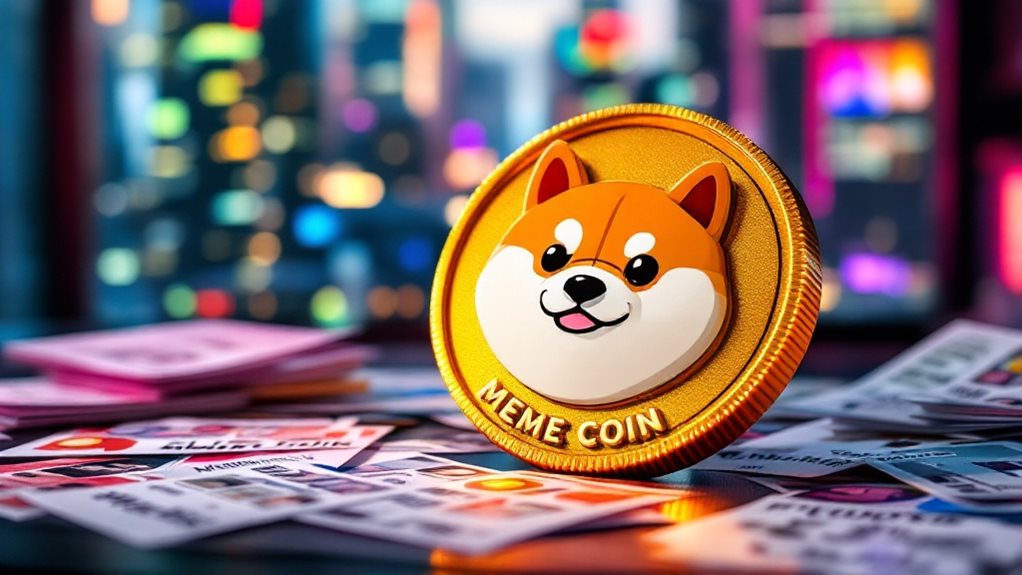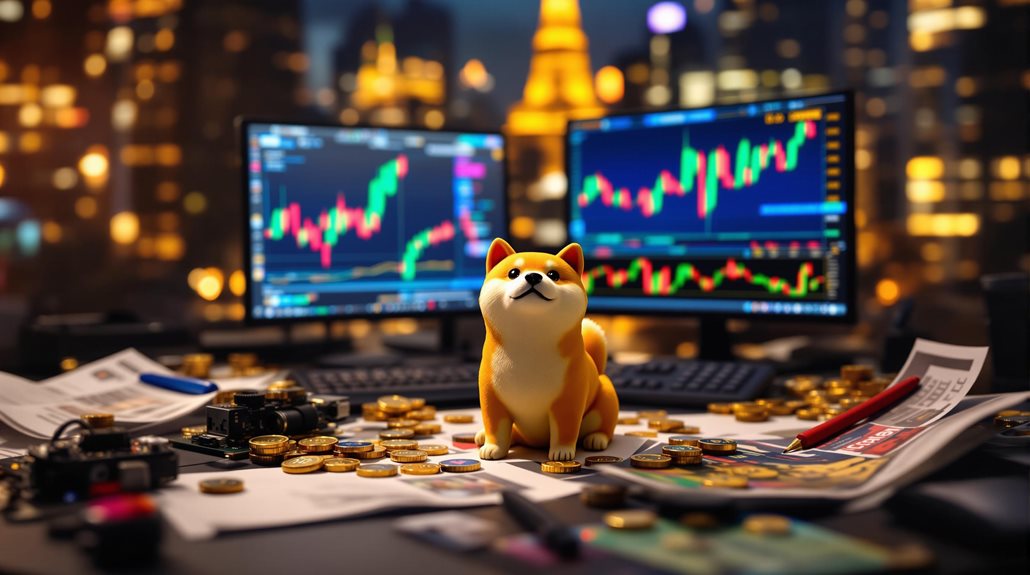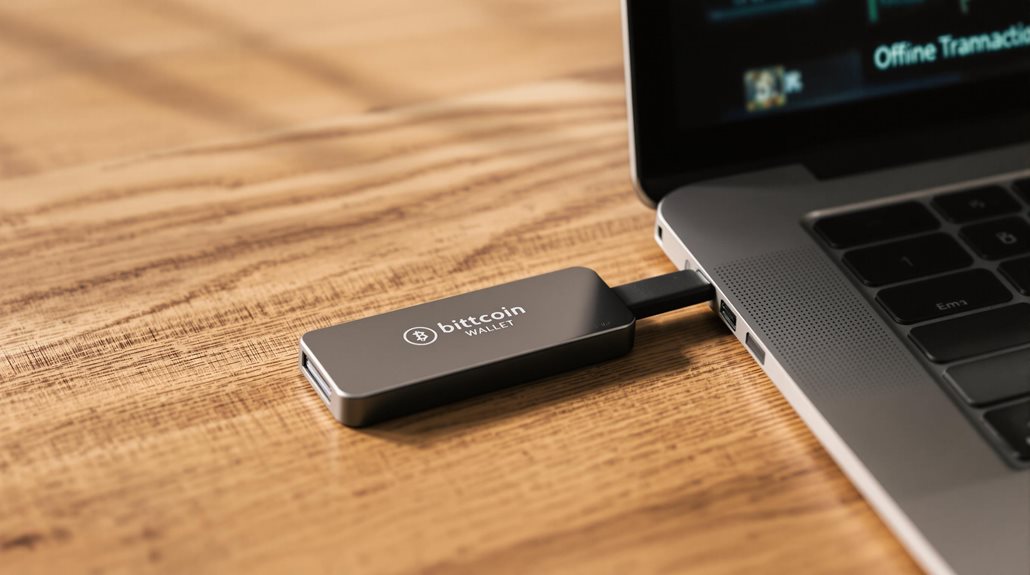Meme coins are digital cryptocurrencies based on internet jokes, viral trends, and pop culture. They first appeared in 2013 with Dogecoin, which started as a joke but gained real value. These coins typically have catchy names and fun themes that connect to online culture. They're known for their large or unlimited token supplies and strong social media communities. While some meme coins have seen massive growth, they're mainly driven by speculation rather than practical use. The world of meme coins holds many surprising twists and turns.

Meme coins represent a unique category of cryptocurrencies that take inspiration from internet jokes, viral trends, and popular culture. These digital currencies first emerged in late 2013 with the creation of Dogecoin, setting the stage for a new type of cryptocurrency that combines humor with digital investments. They're often called "shitcoins" by some in the crypto community due to their less serious nature compared to traditional cryptocurrencies. Many of these projects rely heavily on viral marketing campaigns to drive adoption and value.
What sets meme coins apart is their connection to internet culture and viral phenomena. They typically feature catchy names and amusing themes that reference popular online content. These coins have built passionate communities of supporters who actively promote and trade them on social media platforms. Unlike many traditional cryptocurrencies, meme coins often have large or unlimited token supplies, which affects their potential value. By October 2021, there were approximately 124 meme coins in circulation. Popular blockchains like Solana became the leading platform for launching new meme coins in 2024.
The meme coin market has seen remarkable growth in recent years. From a market capitalization of $200 billion in 2023, it expanded dramatically to $1.4 trillion in 2024. By 2024, eight meme coins had secured positions among the top 100 cryptocurrencies by market cap, and major exchanges like Binance listed 15 different meme coins. This segment of the crypto market has become the fastest-growing, with average returns reaching an impressive 1300% before stabilizing around $50 billion in October 2024.
However, the success of meme coins comes with significant risks. Most of these cryptocurrencies lack solid technical foundations and clear practical applications. Their value is primarily driven by speculation and social media trends rather than fundamental utility or technological innovation. This results in high price volatility, making them particularly unpredictable investments. Projects like Popcat's burn mechanism demonstrate attempts to create value through token scarcity.
The regulatory landscape for meme coins continues to evolve, with some countries taking steps to regulate or outright ban them. These actions reflect growing concerns about the speculative nature of meme coins and their potential impact on investors. Unlike established cryptocurrencies with clear use cases and technological foundations, meme coins often exist primarily as speculative assets driven by community enthusiasm and social media momentum.
Despite the risks and regulatory challenges, meme coins have carved out a significant niche in the cryptocurrency ecosystem. They've demonstrated the power of community-driven digital assets and the increasing influence of internet culture on financial markets. Their rapid growth and massive returns have attracted attention from both casual and serious investors, though their long-term sustainability remains a subject of debate in the cryptocurrency community.
Frequently Asked Questions
Can Meme Coins Be Used for Real-World Purchases and Transactions?
While meme coins can be used for some real-world purchases, their actual usage is quite limited. A few merchants accept popular meme coins like Dogecoin, and Tesla once allowed Dogecoin payments for merchandise.
They're mostly used for trading and social media tipping rather than everyday transactions. High price volatility and limited merchant acceptance make them impractical for regular purchases, though some meme coins are developing new features to increase their utility.
What Happens to Meme Coins When Their Social Media Hype Dies Down?
When social media hype dies down, meme coins typically experience severe price drops, often losing 90% or more of their value.
Trading volume falls sharply, making it harder to buy or sell coins.
The online communities that once buzzed with activity become quiet, with fewer people discussing the coin on social media.
Without the excitement that drove their popularity, many meme coins struggle to stay relevant and may eventually become inactive projects.
How Do Developers Earn Money From Creating Meme Coins?
Developers make money from meme coins in several ways.
They'll often keep a portion of tokens for themselves before launching the coin. When the price goes up, they can sell these tokens for profit.
They also earn from transaction fees charged on trades.
Some create merchandise or paid services around their coin.
Running events, building partnerships, and offering premium features in their ecosystem brings in additional revenue streams.
Are Meme Coins More Volatile Than Traditional Cryptocurrencies?
Yes, meme coins are considerably more volatile than traditional cryptocurrencies.
They're known for extreme price swings that can happen within hours or days. While Bitcoin and other established cryptocurrencies experience price changes, meme coins show much bigger ups and downs.
This higher volatility is due to their smaller market size, lower trading volumes, and heavy influence from social media trends.
They're also more susceptible to market manipulation than traditional cryptocurrencies.
Can Governments Regulate or Ban Meme Coins Entirely?
While governments can create laws to regulate or ban meme coins, it's challenging to enforce them completely.
The decentralized and digital nature of meme coins makes them hard to control. Some countries have tried banning them, but people often find ways around restrictions.
Most nations are focusing on regulation instead of outright bans, implementing rules about trading, taxes, and investor protection.
However, the effectiveness of these measures varies by country.





